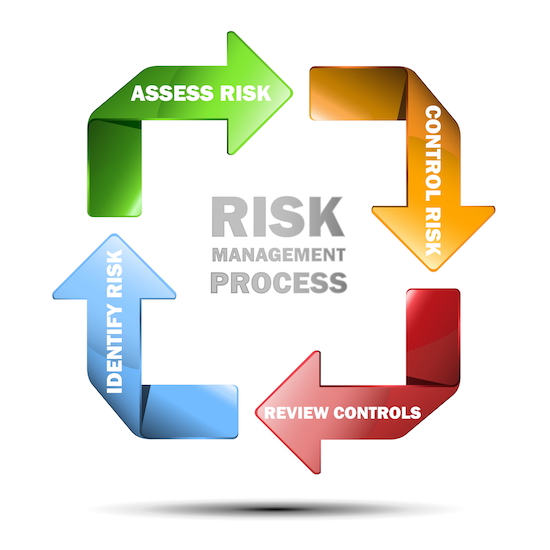
10 Project Portfolio Management Benefits You Need To Know
A clearer understanding of project portfolio management will help you comprehend its benefits that contribute to an organization. In this case, portfolio management is more than just organizing projects into a single portfolio; it also enables companies to conserve time and resources and create transparency in terms of tasks and decision-making. Project portfolio management benefits vary, yet very helpful to an organization. Companies need to be aware of this in order to understand what project portfolio management is conveying. It eschews traditional project management; projects are less vulnerable to risks and they have a greater chance of success if portfolio management is at play. Sure project management is still an important discipline, but for project portfolio management, organizations are able to expedite their projects, create accurate data, and detect redundant projects.
Project Portfolio Management Benefits
Below are Ten Project Portfolio Management Benefits that will help your project receive the boost it deserves. These project portfolio management benefits are also accompanied by Project Management Office (PMO) initiative to further gain your project’s rate of success.
Project Portfolio Management Benefits #1: Decision Making is Better and Clearer
It’s crucial that collaboration is implemented within existing projects of the organization. This is made possible by project portfolio management. With that being said, there is a transparency among team members and the tasks assigned to them. Not to mention everyone can decide which projects should be put on hold and which ones should be on the priority list. It’s a team effort with equal weight on the project’s operation, procedure, and tasks. Additionally, there will be no issues in terms of information dissemination; everyone is informed and aware of what exactly is going on with a particular project.
Project Portfolio Management Benefits #2: Risk Mitigation
It might be your ally in the world of business, but project portfolio management can also be your enemy if not understood and used properly. That is why you need to understand both its function and discipline before plunging into the deeper depths of the water. It’s like reading a book; understand the whole idea before creating a review.
Risks in project portfolio management come in various forms: governance, resource management, and financial. These factors should be considered when analyzing the harmful risks that affect your project; assess every angle and from there, use project portfolio management to your advantage. Once that you execute it, portfolio management will help you determine which projects should be let go due to resource constraints or insufficient budgets.

Project Portfolio Management Benefits #3: Efficient Resources Use
An organization with the absence of PMO means that it will have a hard time to increase or utilize its resources effectively and efficiently. Remember that human resources are deemed the most crucial and essential resources to ever exist in an organization. If your company lacks the hands, brains, and skills, expect it to fall into ruin. Be smart when selecting your resources; some companies go by far as to require applicants to have certifications in their resume. Skills, talents, and expertise are treasure troves for companies and this will increase when you have both PMO and PPM secure. Identifying each of your resources skill will enable you to properly deploy tasks.
Project Portfolio Management Benefits #4: More Value
And not just for the benefit of your projects—this certain value will also create influence towards your stakeholders. This means a bait and hook to have them more intrigued to your projects and overall PMO structure. Valued projects are not only measured on how long it takes to complete but the strategy and processes that come with it. When you are taking care of your PMO and PPM, your projects and accompanying reports won’t undergo a lengthy process—time is gold for stakeholders, so the ability to save it means a great deal to them. When you prove your projects’ value to the stakeholders, it will create convenience and confident on their part. This, in turn, will make them more interested in your future projects and what your organization will come up next.

Project Portfolio Management Benefits #5: Continuous Success
Your PMO develops more success rates and structure that can assist that success. So how can projects acquire consistent success? Routine. This means having a standard process that should exist in every project. Schedule, procedures, tasks—all of them should be standardized to prevent unnecessary changes that can disrupt the flow of your projects. Keep in mind that lessons learned are crucial as well—this will enable you to determine your past blunders and failures and turn them into a guide rather than an experience that you’d rather wish did not exist in the first place.
Refrain from changing your overall practices and stick to the ones everyone has full knowledge of. Even if you are going to inform every one of the changes, it’s not healthy to keep changing and modifying processes—it just creates confusion and it’s time-consuming.
Project Portfolio Management Benefits #6: Project Alignments
A project that is aligned with the organization’s goal is one of the primary benefits of project portfolio management. When you successfully aligned these projects to the company, it will be easier to keep track of the issues the organization encounters and their needs to go back up as well its changes.

Project Portfolio Management Benefits #7: A Focused Investment
Cost is one of the most crucial factors towards project success. But if you focus too much on it, you will lose sight of the possible investment your organization can garner. It doesn’t mean that you will abandon cost forever; in fact, a focused investment and assets exist through careful cost management.
Say you have $3,000,000 in a project. You invested it—all of them—and the result is a returned income. Why did you invest your money in that project? Because you believe it has potential value. How do you know? Because you have implemented project portfolio management. From this, the portfolio not just focus on the cost, but the product and services attached to it as well. PPM creates added value on what you have invested.
Project Portfolio Management Benefits #8: Improvements in Communication
When you collaborate with the team for project success, it is expected that you need to communicate in order to understand each other and acquire the important details of the matter at hand. Project portfolio management, after all, promotes transparency among the team involved. When everyone is informed of the details of a project, collaboration and communication are easier and fewer issues will occur when it comes to task distribution.

Project Portfolio Management Benefits #9: Decisions in Terms of Project Continuity
Organizing projects within a portfolio also mean identifying which projects should be stopped due to lack of profit return through checking the assets within it. Projects are also let go because they disrupt the balance of the portfolio. When one of your projects has either one or both of these characteristics, it’s time to sell or let them go.
Project Portfolio Management Benefits #10: Increase Project Success
Statistics never lie; it shows that companies who have PPM present in their structure have twice the greater chance to achieve project success than organizations who don’t have PPM at all. Because it helps project organization and resource utilization, project portfolio management increases the rate of success by helping the teams identify redundant projects and minimize the chances of risks.
Grabbing the Project Portfolio Management Benefits by the Horns
It may sound a bit overwhelming, but the first step of all is to understand what project portfolio management is all about. If you fail to see its functions, you won’t be able to fully grasp the advantages that are attached to it. You may know which projects are priorities, but you might end up prioritizing a redundant project or one that is no longer profitable.
With portfolio management, it’s easier to identify which projects must go. Think portfolio management as a pair of glasses or a flashlight that help you navigate in the dark. You won’t be able to find what you’re looking for if you don’t use either of the items. It’s the same thing with portfolio management—it’s not present in your organization, your existing projects will fall into failure and risks.
“Let Project Portfolio Management be the light at the end of your tunnel.”
You want to know more about Project Portfolio Management ? Visit our dedicated webpages :

Subscribe To Our Newsletter
Join our mailing list to receive the latest news and updates from our team.























